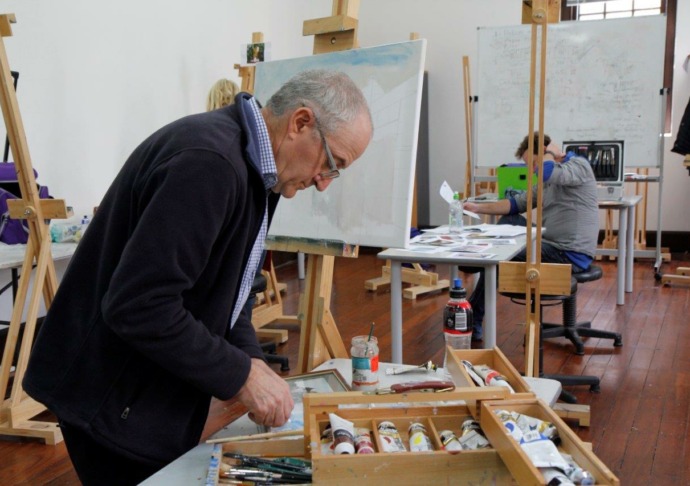
Beginners Acrylics with Miles Carpenter
Acrylics are a great, versatile medium for those new to painting. Learn how to overcome a blank canvas and enjoy…
View Beginners Acrylics with Miles Carpenter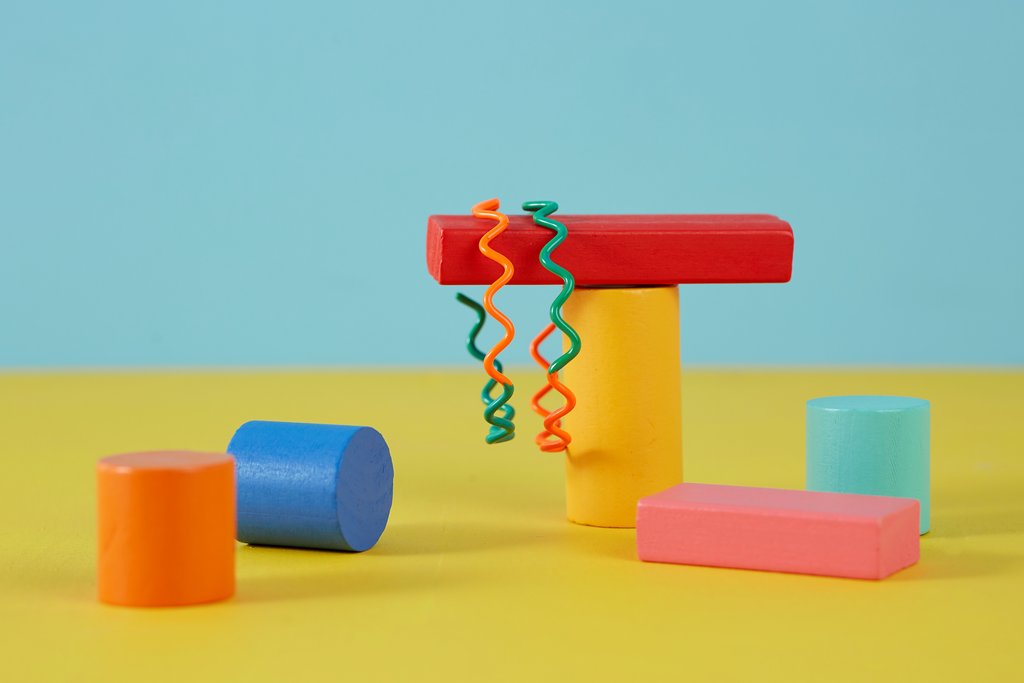
What’s the one thing more satisfying than silver smithing your own new pair of earrings? Lathering them in a bright dollop of enamel paint.
“Colour has always been a large focus of mine. I strongly believe in dopamine dressing,” says Kate Sale, a celebrated Australian jeweller and tutor of a series of new courses at FAC, focussing on unconventional approaches to contemporary jewellery-making.
“Over many years I have played with so many techniques to find the perfect way to create pieces that tick all the boxes: bold, light weight, durable, unique and fun.”
Kate’s courses are among a swag of new offerings for term two that invite students – from beginners to seasoned visual artists – to explore beyond ‘normal’ approaches to art making.
As well as learning powder coating and jewellery design under Kate’s watchful eye, students can dive into the vivid world of colour theory with nationally respected painter Desmond Sweeney, get their hands dirty with Holly O’Meehan’s hand-building clay objects course, discover block printing and screen printing with Bori Benko, and carve intricate wooden objects with sculptor Greg Miller.
Read on to discover more about these highly anticipated new courses (commencing from 3 May), offering new and surprising ways to expand your creative horizons in the fun and supportive environment of FAC’s studios.
In this nine-week course, painter, muralist and set designer Desmond Sweeney will delve into the fundamentals of colour theory: why colours are used, their origin, how to mix and harmonise colours to create artworks that are both visually arresting and captivating. Whether it is for your curiosity, for a project, or your own art practice, students will leave this class with an in-depth understanding of colour, learning from popular culture, architecture, fashion, and of course, the many great masters of colour in fine art.
For more information:
Learn from esteemed contemporary jeweller Kate Sale in these new nine-week courses, designed to explore traditional jewellery making techniques with a modern twist. Known for her bright, modern, and very colourful pieces, Kate is constantly on the lookout for new and unconventional ways to craft a piece of jewellery, using a combination of techniques including silver smithing, lost wax, laser engraving, cast in place stone setting, traditional stone setting, powder coating and electroforming.
In this Q&A, Kate – who studied Jewellery at NMIT in Melbourne – shares insights into her practice, inspirations and teaching methodology.
Colour has always been a large focus of mine as I strongly believe in dopamine dressing. Wearing bright and colourful jewellery makes me feel happy and people often comment that my jewellery has the same effect on them. Over many years I have played with so many techniques to find the perfect way to create pieces that tick all the boxes that I wanted in jewellery – bold, light weight, durable, unique and fun.
In traditional jewellery work, jewellers focus on one technique when making a piece. I believe that through combining a myriad of techniques such as silver smithing, lost wax, laser engraving, cast in place stone setting, traditional stone setting, powder coating and electroforming, you can create whatever your heart desires. All these techniques can be explored in my classes.
For more information:
In this tactile, hands-on five week course, you’ll become well acquainted with our delightful ceramics studio at FAC. Under the tuition of emerging Western Australian artist Holly O’Meehan, learn to hand build your own organic, functional ceramic objects. Using coil, slab and pinching techniques with clay, design and create your very own ceramic cups, jugs or vases.
For more information:
Under the guidance of experienced 3D artist Greg Miller, this eight-week course explores the fundamentals of whittling and wood carving including: basic knife skills, how to tattoo wood, 2D and 3D whittling skills, chip carving, relief carving alongside a focus on design and execution. Each week will focus on a small project and object to create, leaving students with a bounty of new skills and artistic creations to take home.
For more information:

Acrylics are a great, versatile medium for those new to painting. Learn how to overcome a blank canvas and enjoy…
View Beginners Acrylics with Miles Carpenter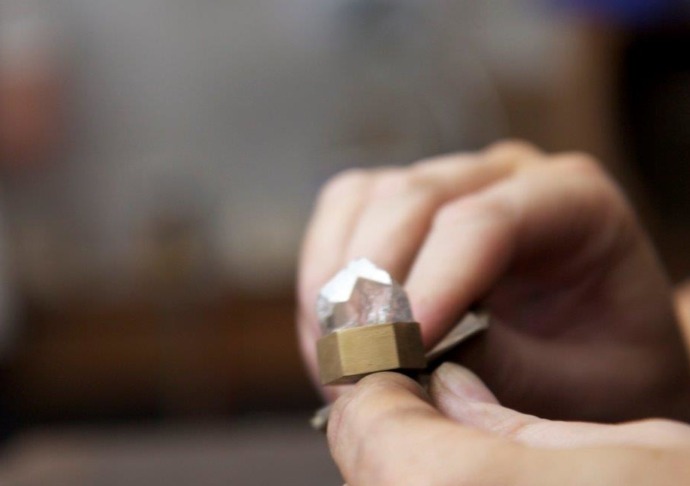
Bezels are a popular and secure way to set stones. Using a stone of your choice, make a customised bezel…
View Bezel Set Ring in a Day (28 April)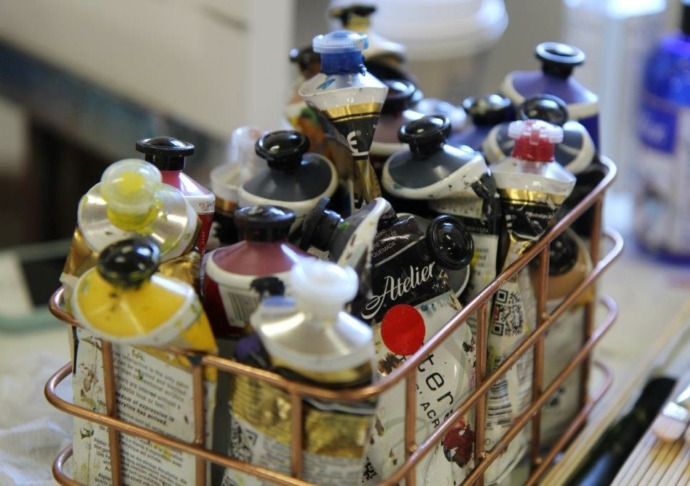
This class is designed for Miles Carpenter's existing students who have completed the intermediate course as well as newcomers with…
View Contemporary Acrylics Studio With Miles Carpenter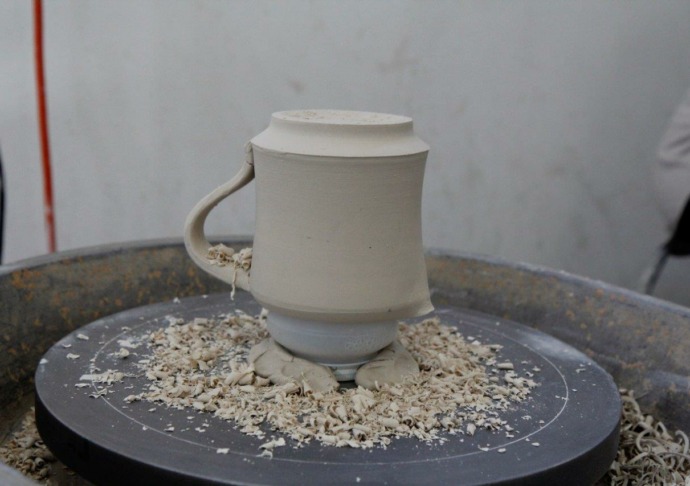
Make plates and bowls to create a matching set to use at home. Learn different techniques to create beautiful, useful…
View Plates, Cups, Bowls (Night)Fremantle Arts Centre is situated at Walyalup on Whadjuk Nyoongar Boodjar. We acknowledge the Whadjuk people as the traditional owners and custodians of these lands and waterways and extend our respect to their Elders, past and present.
We offer our heartfelt gratitude to the Whadjuk community and to all Aboriginal and Torres Strait Islander people who continue to care for Country and share their knowledge – this generosity and wisdom helps us to understand and navigate Country safely and respectfully.